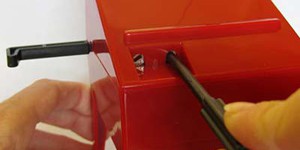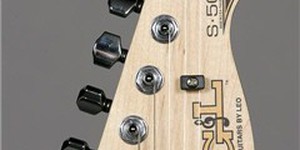Elementary School, Music Science Projects (17 results)
While everyone else is paying attention to what they see, maybe you're focusing on what you can hear. Explore the physics of sound, musical instruments, and even how people respond when they hear music.
|
Select a resource
Coding Projects
Sort by
|
Have you ever blown across a bottle's top and made a pleasant, resonant sound? If so, have you wondered how that note is made exactly? A bottle is actually what is called an air cavity, also known as a Helmholtz resonator. Ocarinas are examples of musical instruments of this type. In this science project, you will use bottles to investigate how the volume of air in the cavity affects the pitch of the note that it makes. All you need are some bottles, water, a ruler, and a chromatic tuner.
Read more
Don't you just love listening to music? In the 1980s, people listened to music on the Sony® Walkman®. Now, people listen to their favorite tunes on MP3 players and on their Apple® iPhonesTM. But listening to music on devices actually started in the late 1800s and early 1900s. In those days, people would gather around their phonograph to listen to their favorite tunes—people were just as amazed with the phonograph as you would be to handle an iPhone. In this physics science…
Read more
New
Have you ever seen a waiter balance an entire tray of drinks without spilling any? How do they do it? Do you think you could build a robot waiter that can do the same thing? In this project, you will learn how to build a self-balancing robotic tray. You can incorporate the auto-leveling tray into one of our many other robotics projects, like the Bluebot or robotic arm.
Read more
Lights and music make a great combination! Getting sound and lights to complement each other just right helps set the mood for everything from DJ parties and concerts, to theater shows, the circus, and ballet performances. You can put together your own lights and music show using a Raspberry Pi. Check out the video to see what this simple, but fun, project looks like.
Once you have the basics down, you can keep tinkering with the circuit, the sounds, and the program to make fancier versions…
Read more
What is the highest note you can sing? How about the lowest? Do you think males and females can reach the same notes? How about children and adults? Find out the answers to all these questions in this "note"-worthy science fair project!
Read more
Have you ever seen a great movie and then rushed out and bought its soundtrack? Did the soundtrack bring back the thrill of an action chase? Or the sadness one of the movie's characters felt? Music is a big part of the movie experience. It intensifies the emotions in scenes so that you do not just jump when that hairy spider comes around the corner, you scream! In this music science fair project, you will find out if happy, sad, scary, and action scenes in movies use music with the same…
Read more
New
Have you ever walked next to your favorite ocean, lake, or creek and seen plastic waste everywhere? Have you ever thought about how much plastic breaks down into microplastics and pollutes waterways? Scientists are coming up with new ways to remove these microplastics from our waterways, and now you can test them out for yourself at home.
Read more
Here is a riddle for you: name an instrument that you play with your hands but never actually touch. Have you guessed the answer? It is a theremin! This unusual instrument makes sound without anyone touching it. How does a theremin work? It has an antenna that can detect the player's hand nearby, and as they move their hand around the theremin, the sound it makes changes based on the hand's position. In this music science project, you will get to use your own mini theremin to investigate…
Read more
Here's a fun science project for anyone who plays an electric guitar. You'll learn about the physics of vibrating strings, and find out why the tone of your guitar changes when you switch between the different pickups.
Read more
The American holiday of Thanksgiving is a favorite of many. Friends and family getting together, a big feast, fancy china and glassware on the table. Who can resist the temptation to make the wine glasses sing? Find out more about how this works with this project!
Read more
Walk into a fitness club and what kind of music do you hear? Slow, sparkling, relaxing music? Or driving, "up-tempo" songs that are designed to encourage you to move? Fitness clubs and other businesses, like restaurants and grocery stores, use background music to set the mood and to determine how fast they want their customers to move. The tempo of the background music is a key component to the environment that businesses want to create. Tempo is an important number or word inscribed by a…
Read more
Did you know that making a musical instrument is not just an art, but a science, too? You can discover just how scientific by building your own xylophone (or a set of chimes) from copper pipe. First you'll need to do some research about the math and physics involved in the sounds of a xylophone. For example, there are equations that describe the transverse (side-to-side) vibrations of a pipe. These vibrations create the sounds you hear. So, to get specific sounds, xylophone makers must apply…
Read more
|














